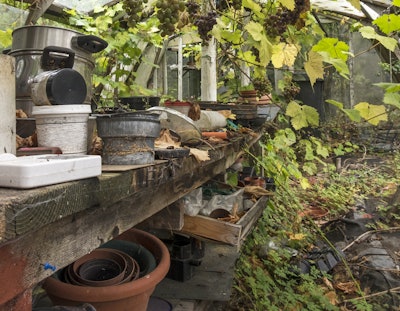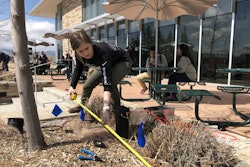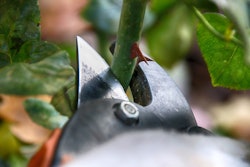
Landscapes can become just as cluttered and crowded as a home with an overabundance of plants, outdoor furniture, materials, garden accessories, broken pots, tools, and more. It’s important to take time periodically to clean out and organize these spaces.
Keeping with the trend of tidying up around the home, take a look at a few helpful tips you can use when working to declutter your customer’s yard and garden.
The first thing to ask your customers when beginning the decluttering process is to take each individual item in the landscape and ask whether or not this item brings them joy. If it doesn’t and it isn’t useful to them, it’s time to get rid of it.
If these items are still functioning and in good condition, talk to your customers about donating them to others in the community. By taking out these items that no longer offer joy to your customers, it will open up their space and let their remaining plants and fixtures breath.
The next step is to declutter based on category, not by the area. The typical idea when it comes to organizing and decluttering is to start with a certain area of the yard and move from there, but that’s not always the most successful method. Instead, go through everything by category, such as starting with tools and moving on to furniture etc.
Go through every area of the landscape with your customer and gather each item to sort into groups. Be sure to get rid of duplicates, broken items or items your customer doesn’t use anymore.
The third step is one that can be more difficult, as it deals with getting rid of the “what if” and “I might use this someday” items. If there are half-dead plants sitting around, it’s time to compost them and tidy up any leftover debris.
Be sure to take time to assess plants that might be underperforming, such as any fruit trees that are producing poorly or any plants that look sickly.
Once you and your customer have made it through the first three steps, it’s time to move onto step four, which is giving the remaining items their own specific home.
Now that your customer’s space is a lot less cluttered and crowded, it’s important to have a designated space for each item where it can be easily accessed when needed.
For items that will be used frequently, keep them where they can be seen instead of being stored in a shed or storage bin somewhere. The overall goal is to make it just as easy to put something away as it is to find it later.
In step five, it’s time to redefine your customer’s garden style now that there’s a lot more space to work with. Since the area will look much more open and cleaner by this stage in the decluttering process, your customers might be inspired to try out a new, updated look for their space.
Take this time to rearrange or repaint furniture, transfer some plants around the space or even replace existing plants with new ones to create a new atmosphere.
What’s the best way to ensure your customer won’t have to buy new tools and furniture? Encourage them to take great care of what they already have. This is where step six comes into play. To ensure your customer’s items are lasting as long as possible, talk to them about how they care for and treat the items, such as sharpening blades, oiling shovel handles, dusting off pots, etc.
The final step is to really embrace the less is more mentality. Your customers will be astounded by the amount of space they have available once they’ve gone through the decluttering process, and keeping with the idea of less is more will help the area stay that way longer.
Remind customers that later down the road, there will be the temptation to fill that open space back up with other items, but before they begin shopping for new furniture or more plants, remember the steps they went through to get to this point.











